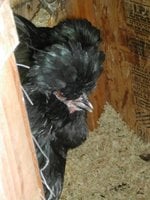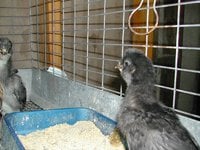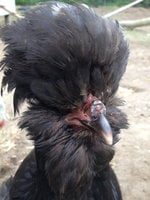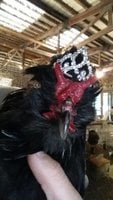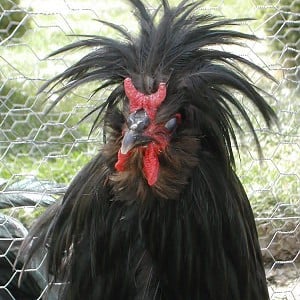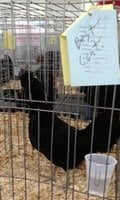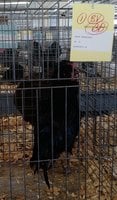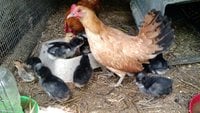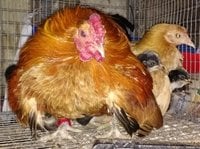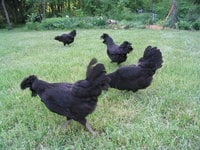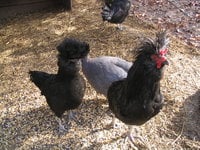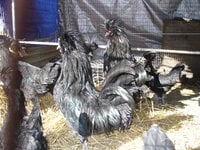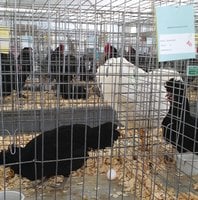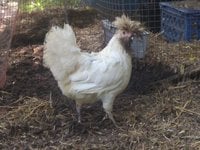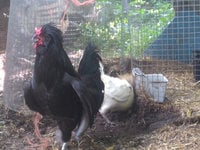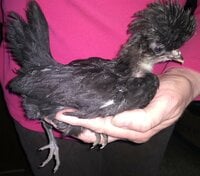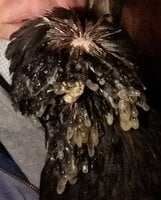General Information
- Breed Purpose
- Dual Purpose
- Comb
- V-Shaped
- Broodiness
- Seldom
- Climate Tolerance
- All Climates
- Egg Productivity
- Low
- Egg Size
- Medium
- Egg Color
- White
- Breed Temperament
- Friendly,Easily handled,Bears confinement well,Quiet,Docile
- Breed Colors/Varieties
- Black, although blue is also available in other countries.
- Breed Size
- Large Fowl
The Crevecoeur is a rare chicken breed originating in France, where it was kept as a dual purpose chicken, raised both for its white eggs and for meat. It is named after the town of Creèvecoeur in Normandy and is one of the oldest French chicken breeds. It may be the progenitor of the La Flèche, Houdan, and Faverolles breeds.
The Crèvecœur has uniformly black plumage, a V-shaped comb and a large crest. In the United States and the United Kingdom, where consumers prefer table birds with light colored legs, it is primarily bred for ornamental purposes and exhibition.
The Crèvecœur was added to the APA's Standard of Perfection in 1874.
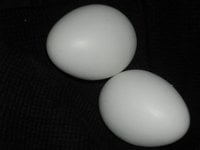
Crèvecœur eggs
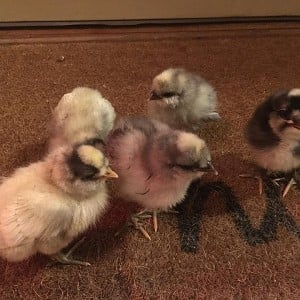
Crèvecœur chicks
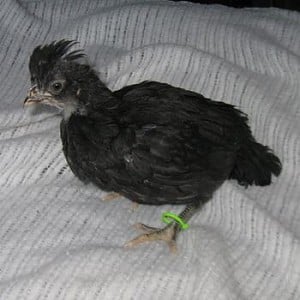
Crèvecœur juvenile
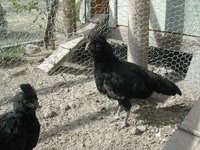
Crèvecœur hen
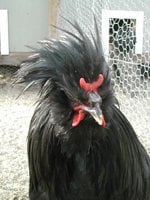
Crèvecœur rooster
For more information on this breed and their owners' and breeders' experiences with them, see our breed discussion here: https://www.backyardchickens.com/threads/crevecoeur-thread.371947/

